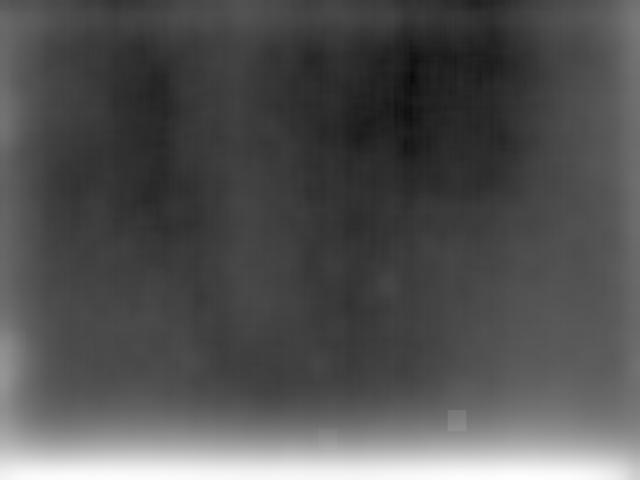In the preceding post, I presented data about the D810 fixed pattern read errors and the results of using averaged dark-field images to correct the fixed part of the read errors. We found that almost all of the low-frequency componts of the read errors were fixed — they didn’t change from exposure to exposure.
Now I’lll show you some sample images. As usual in this read noise analysis series, they have been scaled into the range [0,1], have had a gamma curve of 2.2 applied , been res’d down to 640×480, and JPEG’d.
A sample dark-field image:

The reason it’s so dark is that hot pixels control the scaling.
The 256-exposure averaged image:

It’s at least as dark, because the hot pixels are part of the fixed pattern.
The result of subtracting the averaged image from the uncorrected image:

Can’t see much, can you? Lets do some low pass filtering, first with a 36-pixel square kernel.
The dark-field image:

The averaged image:

The corrected image:

Now with a 216-pixel square kernel.
The dark-field image:

The averaged image:

The corrected image

:When you look at these images, don’t judge the overall noise level; it’s all been normalized so that the range on all the images is the range of the error. Look at how pleasing or ugly the patterns are.
Leave a Reply